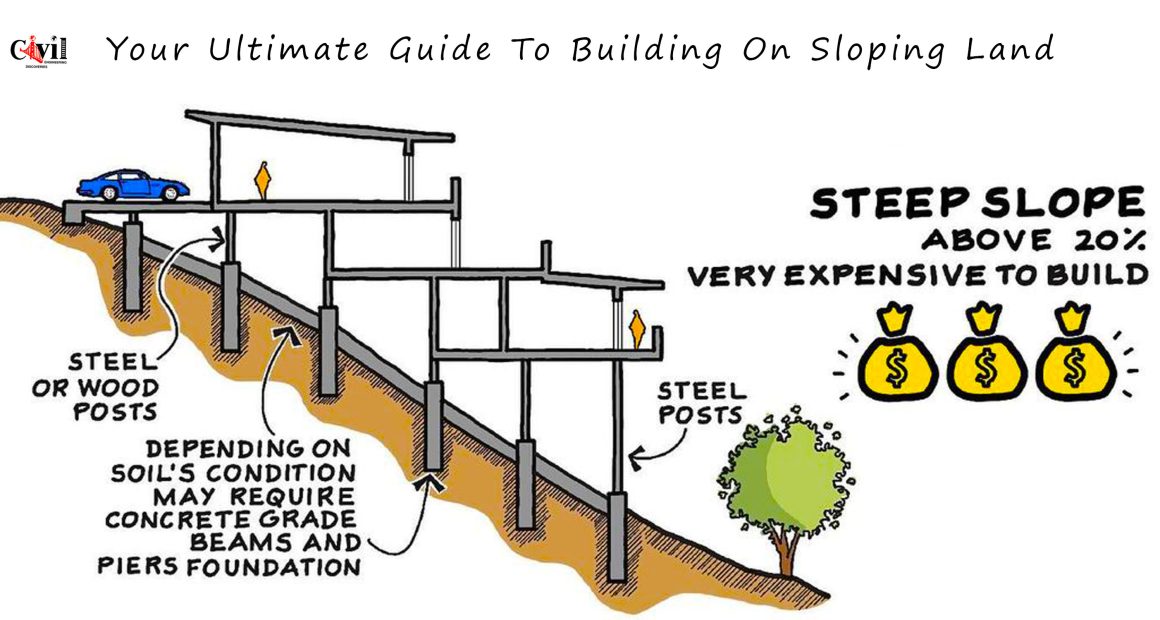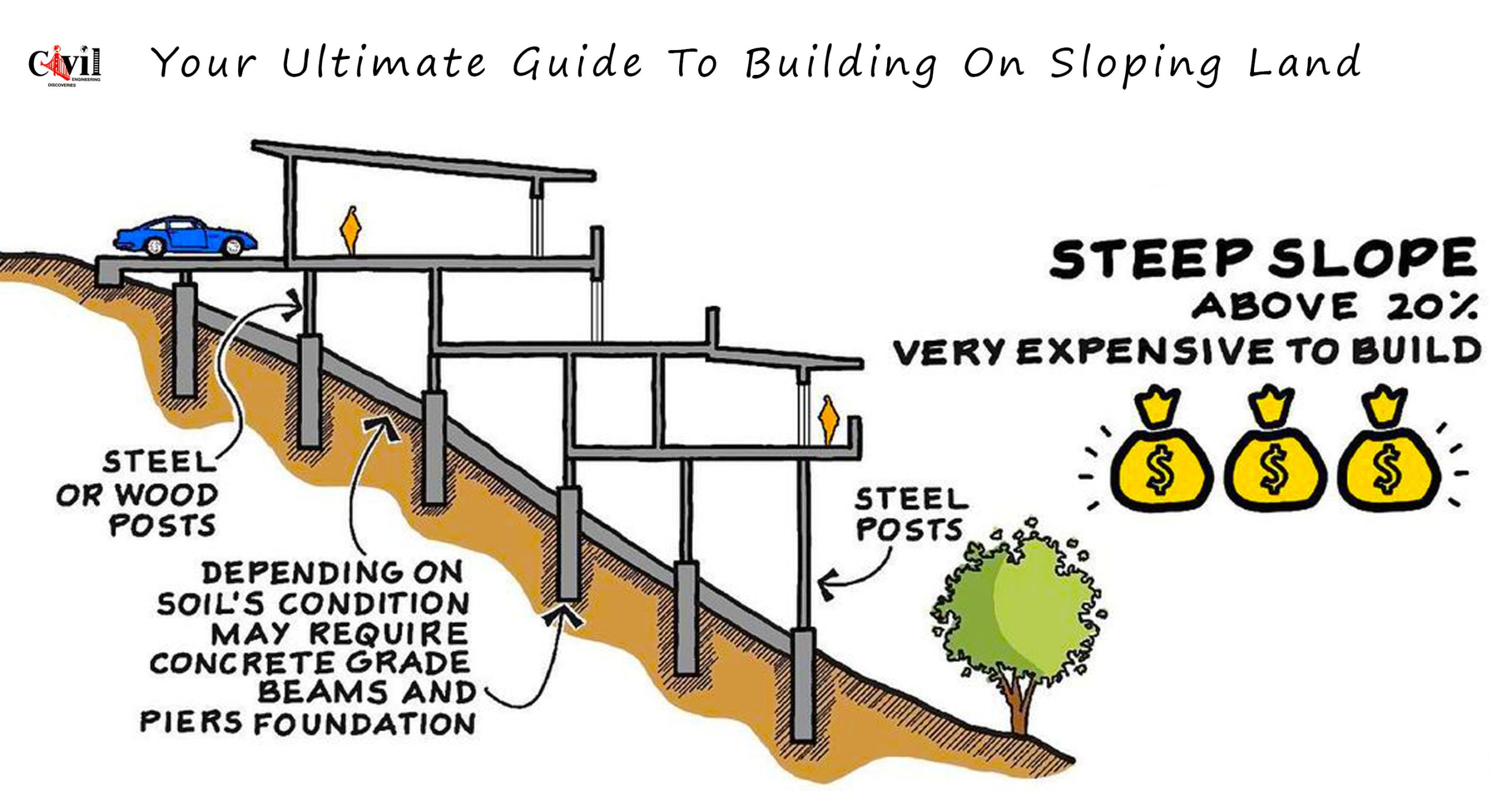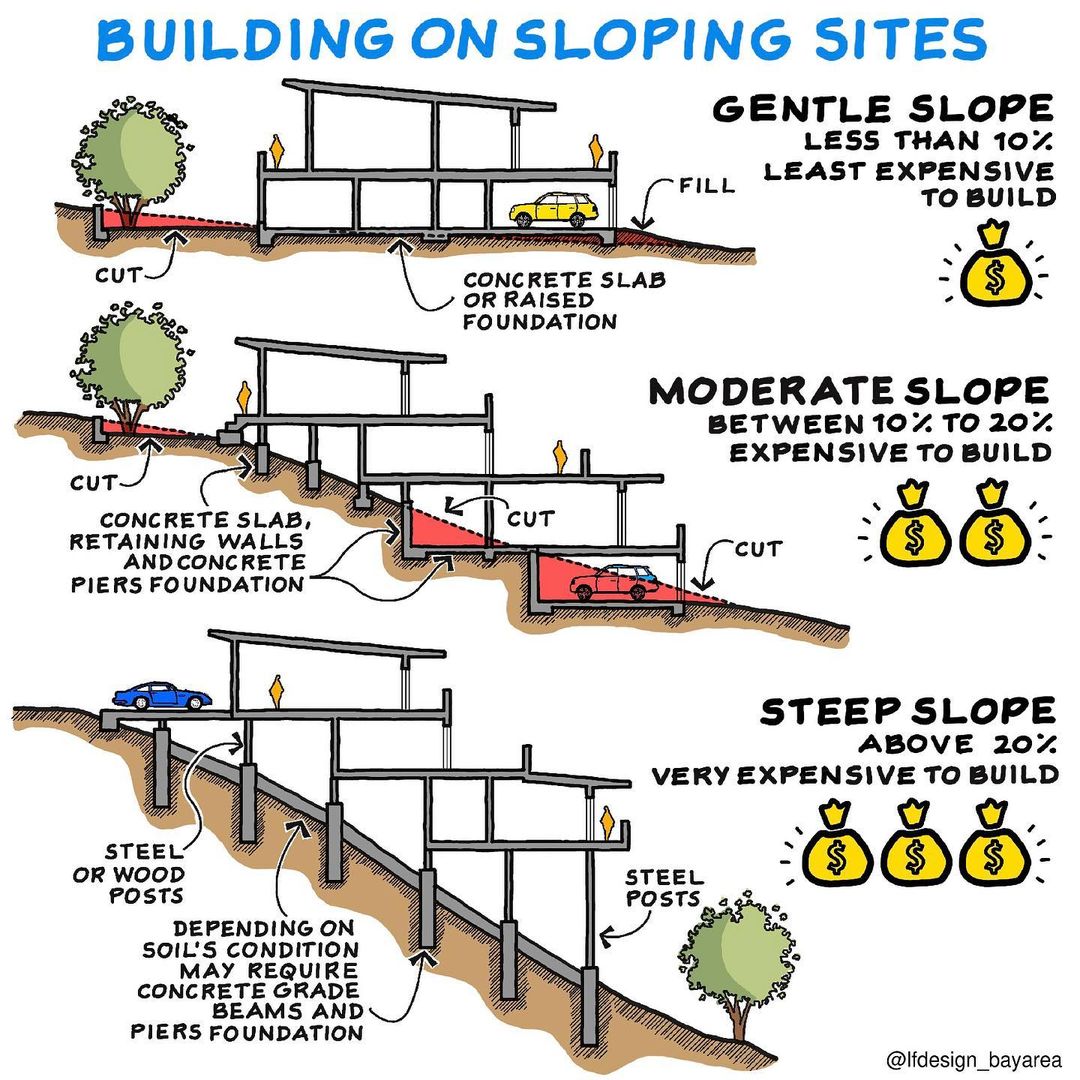Building on sloping sites presents both challenges and opportunities. While such sites can offer stunning views, privacy, and unique architectural possibilities, they also require careful planning, engineering, and consideration of costs. Here are some key factors to consider:
Advantages:
- Scenic Views: Sloping sites often offer panoramic views, making them ideal for homes designed to take advantage of the landscape.
- Natural Light and Ventilation: Elevated designs can capture more sunlight and fresh air, enhancing the livability of the space.
- Unique Design Possibilities: Slopes allow for creative architecture, such as multi-level homes that blend seamlessly into the terrain.
Challenges:
- Increased Costs: Building on a slope can be more expensive due to the need for specialized foundations, retaining walls, and excavation work.
- Engineering Requirements: Proper drainage, soil stability, and erosion control are critical to ensure the long-term durability of the structure.
- Access and Logistics: Construction on sloping land can be logistically challenging, requiring careful planning for the delivery of materials and movement of equipment.
Strategies for Success:
- Site Analysis: Conduct a thorough analysis of the site, including soil testing and topographical surveys, to understand the land’s behavior and limitations.
- Terracing and Retaining Walls: Consider terracing the land to create flat building areas, and use retaining walls to manage soil movement and prevent erosion.
- Adaptable Design: Work with architects and engineers experienced in hillside construction to design a structure that adapts to the natural slope, minimizing the need for extensive excavation or leveling.
- Sustainable Practices: Take advantage of the slope for eco-friendly features like gravity-fed water systems or passive solar energy designs.
In summary, while building on a sloping site involves higher costs and complexity, the potential rewards in terms of aesthetics and lifestyle can be well worth the investment. Proper planning and collaboration with professionals are key to ensuring a successful project.
Click Here To See Understanding Wall Types In Construction
Photo Credit: Luis Furushio
Subscribe
Login
0 Comments
Newest







